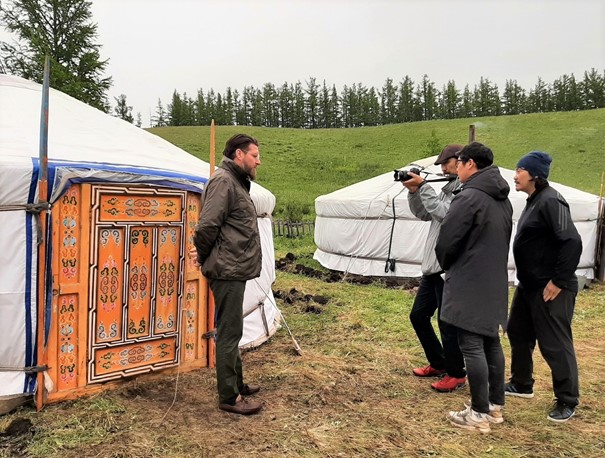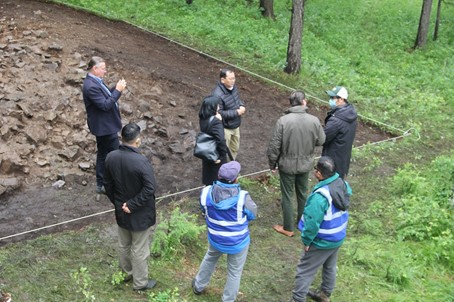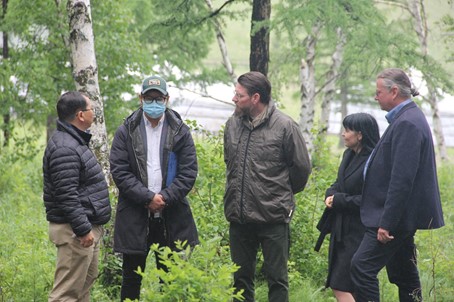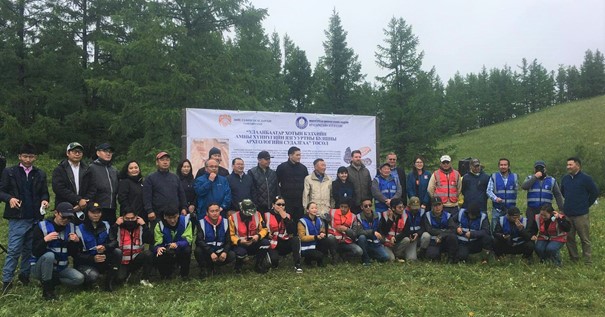A new chapter for Hungarian prehistoric research
Yesterday evening, Director-General Gábor Horváth-Lugossy and Director Miklós Makoldi arrived in Ulaanbaatar to give substance to the recently signed cooperation agreement with the Institute of Archaeology of the Mongolian Academy of Sciences. The first project of the cooperation is the participation in in the Mongolian research on Asian Hun archaeological sites.
Yesterday evening, Director-General Gábor Horváth-Lugossy and Director Miklós Makoldi arrived in Ulaanbaatar to give substance to the recently signed cooperation agreement with the Institute of Archaeology of the Mongolian Academy of Sciences. The first project of the cooperation is the participation in in the Mongolian research on Asian Hun archaeological sites.

This morning, Borbála Obrusánszky, Ambassador of Hungary to Mongolia, received the delegation of our Institute and presented the activity of the Embassy. Before taking office, the Ambassador had already been engaged in disseminating Hungarian culture and scientific achievements in Mongolia, and she had drawn the attention to the partly common historical roots of the two nations, especially to the Asian Huns. Since she took office, this work has become even more effective. She also promoted and facilitated the rapid establishment of the current cooperation.

The joint Mongolian-Hungarian research started exactly 60 years ago, in 1961, when two Hungarian researchers, Tibor Horváth and István Erdélyi conducted excavations in Asian Hun cemeteries in Mongolia. This year, we revived this long-standing Mongolian-Hungarian cooperation by starting the joint excavations of the Institute for Hungarian Studies and the Archaeological Institute of the Mongolian Academy of Sciences at the Belch Hun cemetery by the Selba River, following in the footsteps of Tibor Horváth.

In the morning, the joint 2021 Mongolian-Hungarian excavation of the Belch cemetery was officially and ceremonially launched. At the opening ceremony, Director General Gábor Horváth-Lugossy pointed out that "the Institute for Hungarian Studies will undertake the archaeogenetic investigations of the possible bone finds. We will report on the excavation to the international scientific community in a joint publication of the Mongolian and Hungarian scientists."

On the Mongolian side, the excavation is led by Gelegdorj Eregzen, Director of the Archaeological Institute of the Mongolian Academy of Sciences and the Hungarian leader is Miklós Makoldi, Director of the Archaeological Research Centre of the Institute for Hungarian